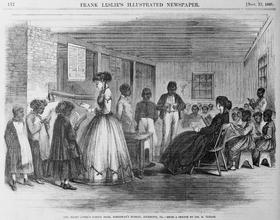Although Brown v. Board of Education eliminated school segregation 58 years ago, the idea of bussing students to integrate them more effectively is still going strong in some school districts. Today, the issue is not race as much as it is socioeconomic status—integrating wealthy and low-income students into a diverse student body that performs better academically. Does it work? The answer depends on who asks the question.
In this TED Talk, Kandice Sumner sees the disparity every day in her Boston classroom. In this inspiring talk, she asks us to face the facts and change them.
School Assignments by Socioeconomic Status Not a New Idea
USA Today reported more than two years ago that more than 60 school systems used socioeconomic status as a factor in school assignments. These schools made this decision primarily to improve performance in schools with a high concentration of poverty.
“To the extent that we can eliminate the highest concentrations of poverty, or spread more thinly those concentrations of poverty, I think we make the environment a little less challenging for students and staff to be successful,” Michael Rice, superintendent for Kalamazoo Public Schools in Michigan, told USA Today at the time.
Wake County in North Carolina was one of the first school districts in the country to consider bussing based on income level. In 2000, this school district shifted its bussing policy from one






































